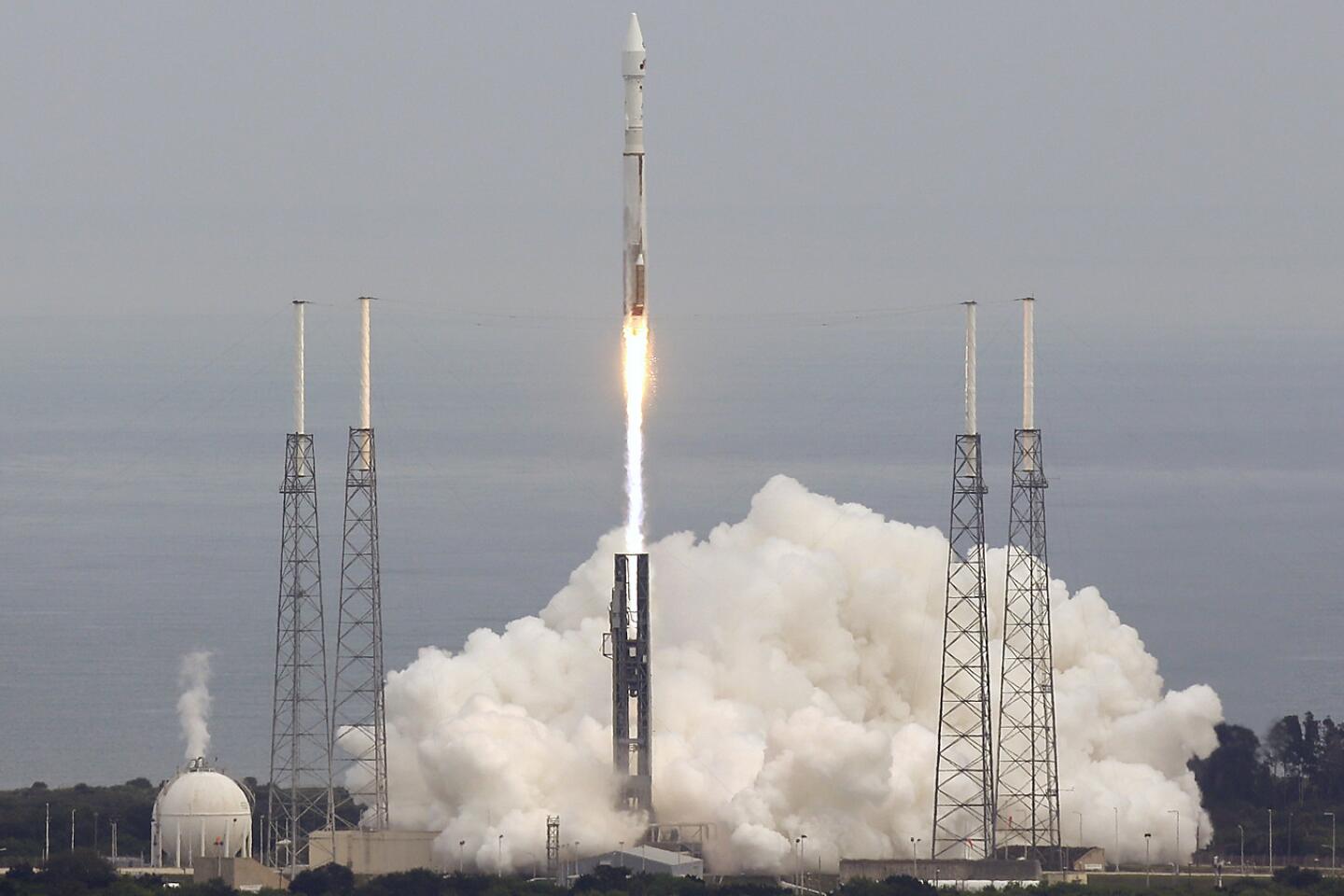Welcome to Mars! MAVEN settles in around the Red Planet
MAVEN has arrived! After a 10-month journey through space, the Mars Atmosphere and Volatile EvolutioN spacecraft finally entered Martian orbit Sunday night. The satellite slipped into a 35-hour elliptical orbit without a hitch, which the scientists will eventually adjust to a 4.5-hour orbit.
“I was on pins and needles and daggers and swords,” said principal investigator Bruce Jakosky, a planetary scientist at the University of Colorado in Boulder. “We have one opportunity to get into orbit — so if we have any problem, that’s the end of the mission.”
The NASA mission will test the top of the Red Planet’s thin atmosphere in order to solve an ancient mystery: Where did the rest of the atmosphere go?
Mars is full of signs that stable liquid water once existed on the surface, from geological features resembling lakes and riverbeds to chemical signatures in rocks modified by water. But how long it lasted depends in large part on how long Mars had a thick, protective atmosphere, rather like Earth’s, that could keep the water from freezing or boiling away.
Getting a handle on that time window -- how long Mars had a water-protecting atmosphere -- could help scientists understand whether this climate lasted long enough for life to have potentially emerged on Mars.
Understanding the carbon dioxide flow will be key, Jakosky said. Carbon dioxide is a greenhouse gas that can help keep an atmosphere warm, so tracking its disappearance will offer more clues about the climate’s history.
MAVEN joins several other robotic Martian explorers, including NASA’s rovers Curiosity and Opportunity as well as the satellites Odyssey and Mars Reconnaissance Orbiter. And the Indian Mars Orbiter Mission is set to arrive in two days, on Wednesday.
Planets are complex systems, Jakosky pointed out — and it’s important to have different spacecraft examining different aspects of Mars’ behavior.
“We want to understand how the processes play across the different areas,” Jakosky said. “They’re all connected and in order to understand one we need to understand all of them.”
Curiosity also has its own instrument suite, called Sample Analysis at Mars, that’s testing the atmosphere near the ground. Coupling that with MAVEN’s look at the top of the Martian atmosphere will give them a top-to-bottom picture of the atmosphere as a whole.
Unlike Curiosity, which shot back images of the Martian surface right after landing, MAVEN will spend six weeks in commission -- adjusting its orbit, testing its instrument systems. But it will take a brief break for science in October, when a recently discovered comet named Siding Spring will fly by the Red Planet, shedding particles that will crash into the upper atmosphere.
“We would like to take advantage of this natural experiment,” Jakosky said. “We’re hoping it’ll be enough to do some interesting things to the atmosphere.”
MAVEN’s primary mission is set for one year, Jakosky said. But the orbital insertion went so smoothly that they have fuel left over -- potentially enough for another 10 years.
Studying the Martian atmosphere for another decade would be exciting, Jakosky said, because they could see how fluctuations in the sun’s 11-year solar cycle affect the Martian atmosphere. (Even though Mars is farther from the sun than Earth is, it’s more vulnerable to such changes because it lacks a protective magnetic field, Jakosky pointed out.)
Love Mars? Follow @aminawrite for more science news that’s out of this world.








